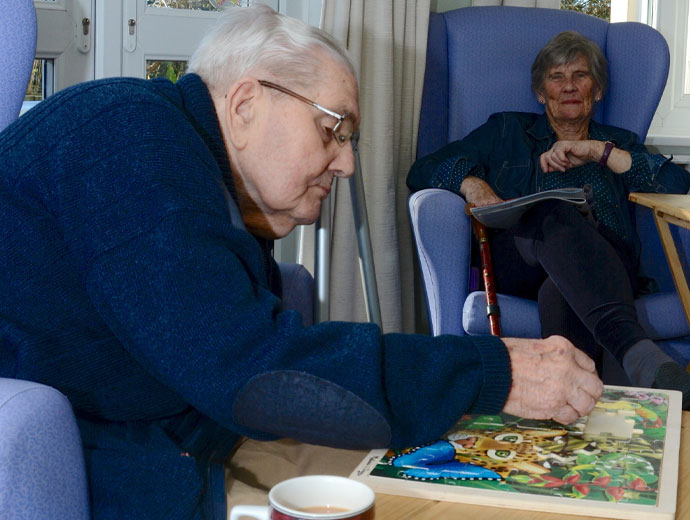
Residents of nursing homes for the elderly have complex demographics. Half are 85-years old or older. Fewer than 1% of nursing home residents are under 65. Most nursing home residents, however, are women. They are primarily single and often have no or few family members. Some residents may have never married or been divorced. Families of these residents often are small and have little or no influence over their lives.
Economic factors
The demand for nursing homes is influenced by various explanatory variables, including Medicaid and economics. The National Long Term Care Survey represents a representative sample of disabled elderly people. It includes both community-based and institutionalized older people and combines state data. Each sample member is classified as Medicaid-eligible, private-pay and the probability of being placed in a nursing home.

Qualifiers
There are many requirements regarding the care provided by nursing homes. These criteria are based upon a range of factors, including the individual's physical, cognitive and social needs. Applicants to a nursing home may need assistance with a variety of activities, such as cooking, cleaning, and using a telephone. Some homes might have special requirements regarding medical equipment as well as assistance with eating, toileting, and continence.
Residents
Families often hesitate to abandon their elderly loved ones in nursing home. Only a handful of residents are truly alone. Family members are able to help elderly people with their daily lives, as well as communicate with staff and address behavioral issues. Elderly residents may need reassurance from family members if they are experiencing major life changes. It can be difficult to choose the right nursing home for your loved ones.
Family members share the responsibility
Responsibilities of family members in a nursing home for the elderly are a critical part of providing care for an older adult, but their roles are not always clear. This article discusses issues related the policies and attitudes that nursing homes have regarding family involvement. There is an emphasis on open communication to avoid miscommunication and ensure residents receive high-quality care.

Residents' behaviour
The following tips will help you prevent resident behaviors that can be harmful to the care of your patients. Avoid rushing or using rapid movements when speaking with residents. The second is to avoid using a harsh or authoritative tone. These can create confusion and leave residents feeling vulnerable and defensive. Finally, avoid any physical contact with residents. Physical contact with residents can provoke violent behavior and escalate the situation. Instead, try to approach residents from the front, engage them in conversation and respond with soothing facial expressions.
FAQ
What about the role of the private sector?
Private sector plays a crucial role in healthcare delivery. It supplies equipment, among other things, that is used by hospitals.
It pays some staff who work in hospitals. It is logical for them to be involved in running the system.
However, they have limitations.
It is impossible for private providers to be competitive with services provided by the government.
They should not attempt to run the entire system. This could be a sign that the system is not providing value for money.
What are the main types of health insurance?
There are three types main types of health insurance.
-
Private insurance covers the majority of your medical costs. Private companies often offer this type of insurance. You only pay monthly premiums.
-
The majority of the costs of medical care are covered by public health insurance, but there are limitations and restrictions to coverage. Public insurance does not cover preventive services, routine visits to doctors, hospitals and labs, Xray equipment, dental offices, prescription drugs or certain tests.
-
Medical savings accounts (MSA) are used to save money for future medical expenses. The funds are held in a special account that is separate from any other kind of account. Most employers offer MSA program. These accounts do not have to be taxed and can earn interest at the same rate as bank savings.
What are the health services?
Patients should know that they can access quality healthcare at all times. We are here to help, no matter if you have an emergency or need a routine check-up.
We offer many different types of appointments, including walk-in clinics, same-day surgery, emergency department visits, and outpatient procedures. We also provide home care visits for those who live far from our clinic. If you do not feel at ease in our office, you can be referred to your nearest hospital.
Our team includes nurses, doctors, pharmacists, dentists, and other professionals dedicated to providing excellent patient service. Our goal is to make each visit as painless and convenient as possible.
Statistics
- The healthcare sector is one of the largest and most complex in the U.S. economy, accounting for 18% of gross domestic product (GDP) in 2020.1 (investopedia.com)
- Over the first twenty-five years of this transformation, government contributions to healthcare expenditures have dropped from 36% to 15%, with the burden of managing this decrease falling largely on patients. (en.wikipedia.org)
- Healthcare Occupations PRINTER-FRIENDLY Employment in healthcare occupations is projected to grow 16 percent from 2020 to 2030, much faster than the average for all occupations, adding about 2.6 million new jobs. (bls.gov)
- Price Increases, Aging Push Sector To 20 Percent Of Economy". (en.wikipedia.org)
- For instance, Chinese hospital charges tend toward 50% for drugs, another major percentage for equipment, and a small percentage for healthcare professional fees. (en.wikipedia.org)
External Links
How To
What is the Healthcare Industry Value Chain?
The healthcare industry value chains include all the activities involved with providing healthcare services. This includes both the business processes in hospitals and clinics, as well the supply chains that connect them with other providers like doctors, pharmacists, insurers, manufacturers, wholesalers, distributors, etc. The final result is a continuum in care that begins with diagnosis, and ends with discharge.
The four key components of the value chain are:
-
Business Processes: These are all the tasks performed by people throughout the entire delivery of healthcare. A doctor might conduct an exam, prescribe medication and send a prescription to a pharmacy. Each step along the way must be completed efficiently and accurately.
-
Supply Chains: All the organizations involved in making certain that the right supplies reach all the people at the appropriate time. A hospital might have several suppliers. These could include lab testing facilities, imaging centres, pharmacies, or even janitorial personnel.
-
Networked organizations - These entities must communicate with each other in order to coordinate. Hospitals typically have many departments, each with its own set of offices and phone numbers. Each department will have its own central point, where employees can get updates and ensure everyone is informed.
-
Information Technology Systems – IT is crucial in order to ensure that business processes run smoothly. Without it, everything could go down quickly. IT can also be used to integrate new technologies into a system. Doctors can connect to a secure network connection in order to integrate electronic medical records into their workflow.